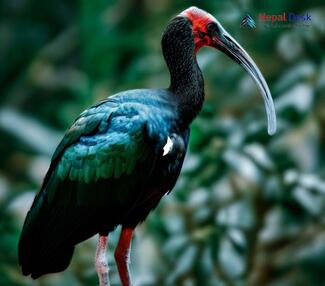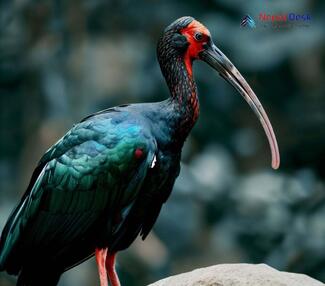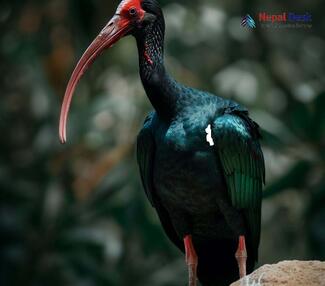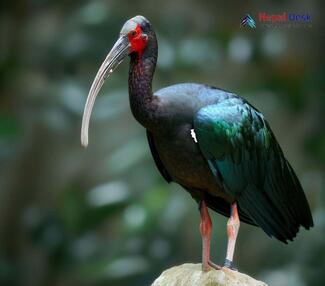The Red-naped Ibis (Pseudibis papillosa) is a fascinating bird species that never fails to capture the attention of avid birdwatchers and nature enthusiasts alike. From its taxonomy and physical features to its habitat, diet, and presence in Nepal, there's so much to learn about this incredible avian creature. In this article, we'll explore the different aspects of the Red-naped Ibis and uncover some interesting points along the way.
Taxonomy and Physical Features
Belonging to the Threskiornithidae family, the Red-naped Ibis is closely related to ibises and spoonbills. As its name suggests, one of its most distinctive features is the bright red patch located on the nape of its neck. Its glossy black plumage, long legs, and curved beak further contribute to its striking appearance. The eyes are surrounded by a thin line of blueish-gray skin which adds an interesting contrast to its overall look.
Habitat
The Red-naped Ibis is primarily found in parts of South Asia, including India, Pakistan, and Nepal. It prefers wetlands such as marshes, swamps, or flooded fields that provide plenty of food sources and suitable nesting sites. However, these adaptable birds may also inhabit grasslands or even agricultural areas if their preferred habitats become scarce.
Diet
Red-naped Ibises primarily rely on their sturdy beaks to feed on a variety of prey, including insects, worms, crustaceans, mollusks, fish, amphibians small mammals. They use their curved bill as a unique tool by probing deep into the soil to forage for their meals.
Presence in Nepal
The presence of the Red-naped Ibis in Nepal has contributed significantly to its reputation as a birding paradise among enthusiasts. Found mainly in lowland regions called "The Terai," this bird is less common in Nepal compared to other parts of the South Asian region but can still be seen at certain times of the year. Birdwatchers and wildlife photographers often seek out this remarkable species on their exploring trips to this breathtaking country.
An Interesting Point:
One notable characteristic of the Red-naped Ibis is its fascinating breeding behavior. These birds are known to create nests in some unexpected places, such as on tall trees or even high voltage power line structures. During the nesting period, both the male and female Red-naped Ibises share the responsibility of incubating their eggs for an estimated 25-29 days.
In conclusion, the Red-naped Ibis offers a delightful blend of unique physical features, intriguing behaviors, and a captivating presence that has earned it a special place in the hearts of bird enthusiasts. As we continue to learn more about this extraordinary species, its importance as a symbol of biodiversity cannot be understated. So, let us appreciate and respect our natural world by being mindful of our environment's delicate balance and nurturing these fascinating creatures' habitats for generations to come.




